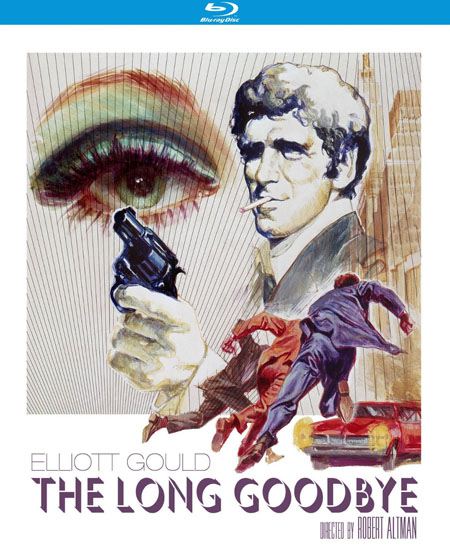
RIP VAN MARLOWE
By Raymond Benson
Robert
Altman was a very quirky director, sometimes missing the mark, but oftentimes
brilliant. His 1973 take on Raymond Chandler’s 1953 novel The Long Goodbye is a case in point. It might take a second viewing
to appreciate what’s really going on in the film. Updating what is essentially
a 1940s film noir character to the
swinging 70s was a risky and challenging prospect—and Altman and his star,
Elliott Gould as Philip Marlowe (!), pull it off.
It’s
one of those pictures that critics hated when it was first released; and yet,
by the end of the year, it was being named on several Top Ten lists. I admit
that when I first saw it in 1973, I didn’t much care for it. I still wasn’t
totally in tune with the kinds of movies Altman made—even after M*A*S*H, Brewster McCloud (an underrated gem), and McCabe & Mrs. Miller. But I saw it again a few years later on a
college campus and totally dug it. Altman made oddball films, and either you
went with the flow or you would be put off by the improvisational, sometimes
sloppy mise-en-scene that the
director used. And the sound—well, Altman is infamous for his overlapping
dialogue (one critic called it “Altman Soupâ€). If you didn’t “get†what the
director was doing with sound, then you would certainly have a hard time with
his pictures.
Yes,
Elliott Gould plays Philip Marlowe. A very different interpretation than
Humphrey Bogart, obviously. And yet, it works. Gould displays the right amount
of bemused cynicism, as if he had been asleep for twenty years and suddenly
woken up in the 1970s. And that’s exactly how Altman, screenwriter Leigh
Brackett (who co-wrote the 1946 The Big
Sleep), and Gould approached the material. Altman, in a documentary extra
on the making of the film, called the character “Rip Van Marlowe.†He is an anachronism
in a different time. For example, Marlowe can’t help but be bewildered by the
quartet of exhibitionist lesbians that live in his apartment complex. And he
still drives a car from his original era. And therein lies the point of the
picture—this is a comment on the 70s, not the 50s.
The
plot concerns the possible murder of the wife of Marlowe’s good friend—the
friend is a suspect—as well as a suitcase of missing money belonging to a
vicious gangster (extrovertly played by film director Mark Rydell), an Ernest
Hemingway-like writer who has gone missing (eccentrically played by Sterling
Hayden), and the author’s hot blonde wife who may know more than she’s telling
(honestly portrayed by newcomer Nina van Pallandt). The story twists, turns,
hits some bumps in the road, and finally circles back to the initial beginning
mystery.
It
may not be one of Altman’s best films, but it’s one of the better ones. It’s
certainly one of the more interesting experiments he tried in his most prolific
period of the 70s.
Kino
Lorber’s Blu-ray release, however, doesn’t really improve on the original DVD
release of some years ago. It appears to be a straight to Blu-ray transfer with
no digital restoration of any kind. Hence, the image looks not much better than
the DVD version. Since the soft photography and low lighting was intentional,
any attempt at high definition is lost. The extras—the aforementioned “making
of†documentary, a short piece on cinematographer Vilmos Zsigmond, an animated
reproduction of a vintage American
Cinematographer article, the trailer, and a few radio spots—are the same.
Still,
if you’re an Altman fan and don’t already own the out of print DVD, you may
want to pick up the new Blu-ray. It probably won’t be long before this, too,
like Philip Marlowe himself, is a rare collector’s item.
CLICK HERE TO ORDER FROM AMAZON